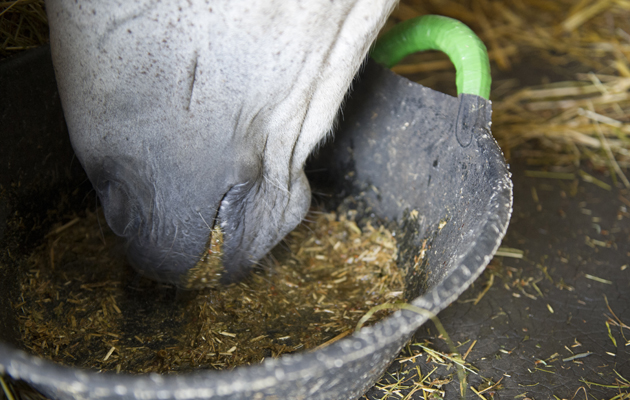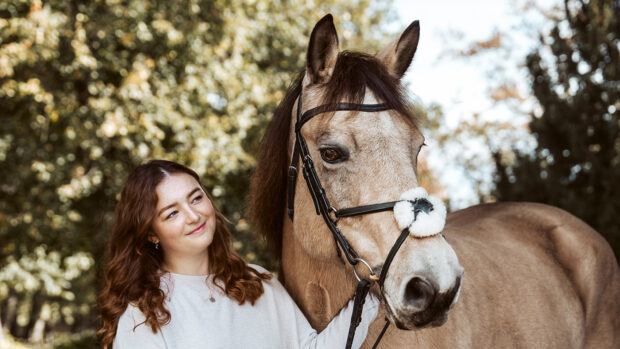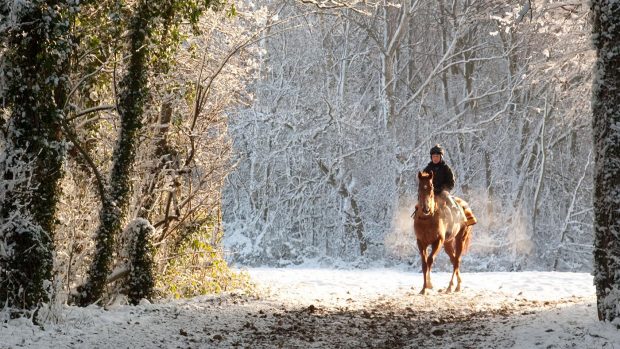Horses and ponies have evolved to lose weight in winter – when historically, food was scarce – and put it on in spring and summer, ready for the next cold season.
But today’s management means most horses now do not lose that weight, as they are kept well fed and rugged in the winter, but still put it on in summer, which can lead to a vast range of health issues.
Owners have been urged to take advantage of the current poorer grazing, and the fact horses need to burn more calories to keep warm, to kick-start weight loss now, and be ready for spring.
Aimi Duff, of Rainbow Equine Hospital, recommends the following:
1. Avoid excessive rugging
Considerable heat is generated by the fermentation of food in the hindgut, which keeps the horse warm. Couple this with the fact horses grow their own rugs, in the form of a winter coat, and many do not need a rug especially if stabled. In severe weather of if they must be kept clean and dry for exercise, a turnout sheet could be enough.
2. Clipping
If a horse needs to lose a lot of weight, or the pounds aren’t shifting with rug removal, consider clipping. Fat is a great insulator, so a fat unclipped horse may be wearing the equivalent of a heavyweight rug. Clipping removes some of that insulation and allows them to increase energy losses.
3. Exercise
It can be hard to exercise horses in winter but where possible, exercise should be encouraged to increase energy expenditure. Whether a brisk walk, a lunge, horse-walker exercise or work over poles, ALL exercise is important to help horses go into spring in better body condition. Exercise can also be achieved by creating a track system in the field where the perimeter of the field is fenced off to create a track. The horse is thus encouraged to move around more than they would in a conventional paddock.
4. Feed little and often
Many horses are fed unlimited forage in winter. This may result in a horse eating in excess of its daily energy requirements. It is important to consider not only the quality of the forage, but also the quantity being fed. It is better to avoid long periods of fasting by using double or tripled fine-mesh haynets to slow feeding, and splitting the daily ration into evenly-spread several portions. If you are concerned about leaving your horse without forage for short periods due to gastric ulcers, please consult your vet.
5. Beware of winter grass growth
Be aware that grass will grow when the temperature exceeds 4C. So on a mild winter day, horse may ingest a surprising amount of sugar when turned out. A horse on a grassy pasture will require much less hay, and sunny days and cold nights will cause levels of sugar in grass to rise.

Babe, pictured top before his diet started and above, a year in. Pictures courtesy of University of Liverpool
On feeding, the University of Liverpool’s Harry Carslake explained that like people, horses vary greatly in their energy requirements, and that the aim of compiling feeding plans for horses is to determine each individual’s daily nutritional needs, then provide a diet that meets these needs.
As this involves questions such as what a horse’s activity level is, and how much grass it eats while turned out, Mr Carslake recommends speaking to a vet or nutritionist to devise a tailored plan.
“Before you do this, start by recording everything your horse eats over 24 hours (measure feeds in Kgs, not armfuls/scoops etc), the hours per day at pasture, the amount of exercise they do per week and any medical conditions that need to be considered,” he told H&H, adding that when devising a plan for overweight horses, there are general rules to consider.
Low sugar
Make low sugar forage the bulk of the diet. Unless in a high level of work, most horses require minimal or no additional concentrate or pelleted feeds, other than a balancer (see below). Soaking hay in cold water for 12 hours is recommended. Consider submitting hay for forage analysis, which is available from several feed companies for about £30. To reduce calorie intake, up to 30% of the hay ration can be replaced by clean straw, but this should be introduced gradually.
Trickle feeding
After speaking to your vet or nutritionist, for an overweight horse with no access to pasture and at a low level of exercise, a reasonable starting point is to feed 1.5-2% body weight of hay per day, divided into several smaller meals to encourage continuous trickle feeding.
Balancer
Feeding a low-calorie protein, vitamin and mineral balancer is recommended for any horse on a hay/haylage-only diet.
Restrict grazing
Limit access to pasture. This is much easier in winter! Horses (and people) love turnout, especially in summer but grass can contain as much sugar as pony nuts, and horses are very adept at consuming large quantities over a short time. Time at pasture and availability of grass need to be reduced (see above) and if a horse is very overweight and/or prone to laminitis pasture might need to be cut out completely.
Continues below…

‘They’re getting fatter and fatter’: Vet’s warning over obesity-related equine deaths
‘As a rule, you’ll get much more criticism on a livery yard if you can see ribs than if your

Warning as well-meaning owners ‘make horses’ lives a misery’
Over-rugging and rider and horse obesity are among the issues affecting horses in this country, World Horse Welfare has warned

Subscribe to Horse & Hound magazine today – and enjoy unlimited website access all year round
Keep feeding
Don’t starve your horse. After the first week, the aim is to lose between 0.5 and 1% of bodyweight per week. Rates higher than this can become dangerous. Feed companies and vet practices often have portable weighbridges and will visit yards.
Treats
Avoid treats such as carrots and apples. There are low-sugar fibre based treats available.
Keep notes
Monitor and record the results. Take weekly girth and belly circumference measurements, body condition scores, and if available weigh on a weighbridge. Consult your vet/nutritionist after four to six weeks and review the feeding plan.
Would you like to read Horse & Hound’s independent journalism without any adverts? Join Horse & Hound Plus today and you can read all articles on HorseandHound.co.uk completely ad-free





